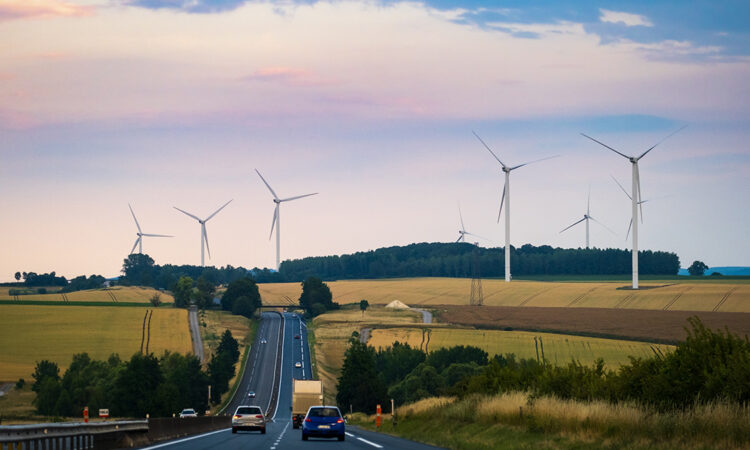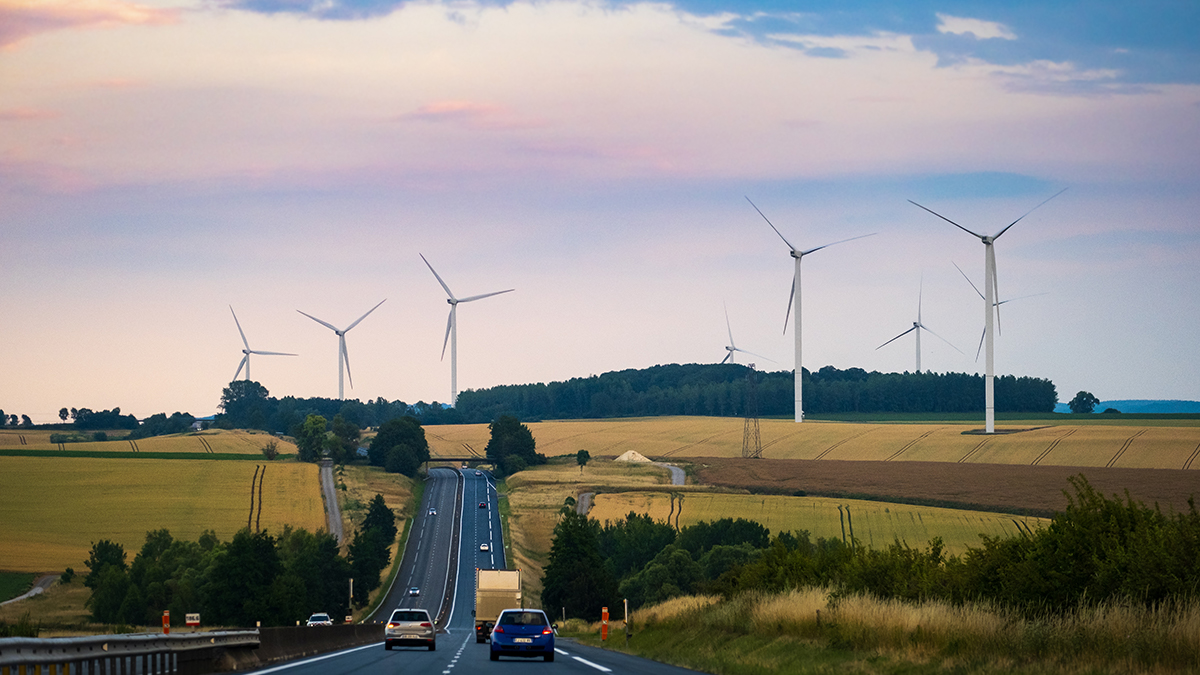
28 February 2024
Uptake in permitting and investments brings 2030 wind target within reach

WindEurope’s annual statistics and seven-year outlook published today show the EU wind energy target for 2030 is within reach. This is mainly thanks to improvements in permitting and a rebound in investments. 2023 also saw a major political turnaround for the EU’s Wind Power Package which 26 Governments then endorsed in the European Wind Charter. But obstacles remain. The biggest threat now to the accelerated expansion of wind is the timely expansion of Europe’s onshore and offshore electricity grids.
The European Union installed a record amount of 16.2 GW new wind energy capacity in 2023. 79% of that was onshore wind. And more than 1 GW came from the repowering of old turbines.
Germany installed the most new capacity followed by the Netherlands and Sweden.
The share of wind in total EU electricity consumption in 2023 was 19%. Another 8% came from solar. Renewables in total were 42% of the electricity mix.
Denmark had the biggest share of wind in its electricity mix with 56%. Seven other countries got more than a quarter of their electricity from wind – Germany got 31%. Total electricity generation from wind in the EU was 466 TWh, up from 412 TWh in 2022.
2030 target within reach
Today’s report includes an outlook for new wind installations over the period 2024-30, based on the project pipeline, announced investments, permitting data and Government auction volumes.
WindEurope forecasts that the EU will install 29 GW a year on average over 2024-30. This will bring the EU’s installed wind capacity to 393 GW in 2030, compared to the 425 GW needed to deliver Europe’s climate and energy targets.
Over the period from 2024-2030, two-thirds of new installations will continue to be onshore. But offshore wind installations will rapidly pick up towards the end of the decade. In 2030 new offshore installations will be almost the same as new onshore installations.
Improved conditions for wind energy
2023 saw significant improvements in areas critical to the expansion of wind energy.
Things are improving on permitting. Europe approved significantly more permits for new onshore wind farms in 2023 than in previous years. This is thanks in large part to the new EU rules on renewables permitting. Germany and Spain permitted 70% more onshore wind than in 2022 – with Germany seeing an impressive 7.5 GW. France, Greece, Belgium and the UK also saw higher permitting volumes.
Investments in new wind energy capacity were also up on 2022. An easing of inflationary pressures, better tariff indexation by Governments and greater certainty on electricity markets created a more favourable investment climate. New investments in offshore wind alone amounted to €30bn – a stark contrast to the €0.4bn invested in 2022.
Crucially, the political outlook on wind energy changed in Europe in 2023. The EU and national Governments recognised that Europe’s wind industry was struggling and needed urgent support. The EU Commission’s Wind Power Package in October set out 15 concrete and immediate actions to strengthen the industry. In December 26 EU Member States and 300 companies then signed the European Wind Charter endorsing the Package and committing to take the actions in it that fall to them.
The Package and Charter commit national Governments to support the European wind industry by improving auction design: fully indexing prices so that revenues reflect costs; tightening pre-qualification criteria to raise the bar on what sort of turbines can be built in Europe; and giving clearer visibility on auction schedules to volumes so the industry can plan better. The Package also commits the EU Commission to support the wind industry through the Innovation Fund and the European Investment Bank to offer counter-guarantees to support equipment sales.
The recently-agreed EU Net-Zero Industry Act (NZIA) now enshrines in law the need to tighten pre-qualification criteria and sets an ambitious target of 36 GW a year for the manufacturing of wind turbines in Europe.
“Things are looking up again for wind in Europe”, says WindEurope CEO Giles Dickson. “Permitting has improved thanks to new EU rules. Investments are up. Record volumes are being auctioned and built. And Governments have committed with the Wind Power Package and Charter to strengthen Europe’s wind energy industry. The industry in turn is recovering. Europe’s wind supply chain is returning to profit and building the new factories needed to deliver the EU’s targets. We’re now confident that we can get close to the EU goal that wind is 35% of electricity by 2030, up from 19% today – provided Europe accelerates the build-out of grids to connect all the new wind farms.”
Grids are the new main bottleneck
To increase annual wind installations from 16 GW in the EU last year to 29 GW pa on average up to 2030, Europe needs to urgently accelerate the build-out of new and optimised electricity grids.
Grid connection queues are delaying the timely connection of new wind farms. Hundreds of GWs of new wind farms are currently waiting for their grid connection.
Delays in the build-out of onshore and offshore grid connections put the timely commissioning of new wind farms at risk. In Germany authorities recently announced that up to 6 GW of offshore wind capacity are affected by grid connection delays. The affected wind farms will now come online with a delay of up to two years.
The EU has fully grasped the issue with its Action Plan on Grids. Implementing this Plan must be a top energy priority for the current and incoming EU Commission – and for all national Governments.
As well as building out the grid, Europe also needs to invest more in ports and other transport infrastructure.






